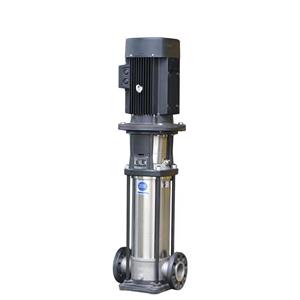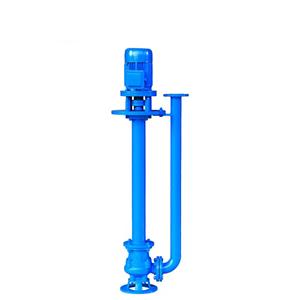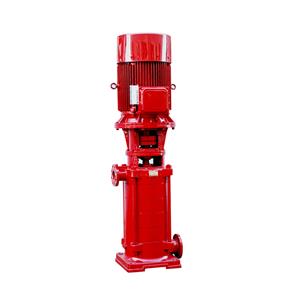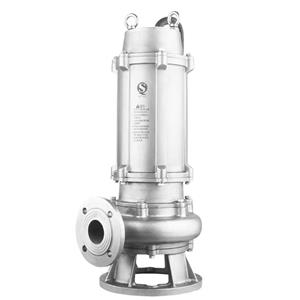Cast Iron Sewage Pumps: Engineering Versatility for Demanding Wastewater Applications
In the complex landscape of wastewater management, cast iron sewage pumps consistently emerge as the default solution for myriad residential, commercial, industrial, and municipal applications. This article examines the engineering, material, and operational factors driving their unparalleled versatility across global drainage scenarios.
I. Material Science: Why Cast Iron?
A. Optimal Balance of Strength, Cost & Castability
Cast iron (typically ASTM A48 Class 30-35 grey iron) delivers:
High Compressive Strength (>30,000 psi): Resists hydraulic forces and pipe stresses during start-up/shut-down surge pressures.
Abrasion Tolerance: Pearlitic matrix with graphite flakes acts as a "lubricant," reducing wear against sand, grit, and suspended solids common in raw sewage.
Thick-Section Castability: Complex volute casings and suction covers are economically cast with uniform wall thickness (>6mm standard).
Damping Capacity: Absorbs vibration/noise from impeller imbalance more effectively than steel or thermoplastics.
B. Superior Corrosion Resistance
Natural Passivation: Forms stable iron oxide (Fe₂O₃/Fe₃O₄) layers protecting underlying metal. This outperforms carbon steel in low-oxygen sewage (typical oxygen reduction potential ~-200mV).
pH Resilience: Stable in sewage pH 6.5-8.5. Chemical resistance tables show <20mpy (mils per year) corrosion rates in:
复制Municipal wastewater: 1-5 mpy Septic tank effluent: 3-8 mpy Food processing waste (pH>5): 5-15 mpy
Sacrificial Tolerance: Unlike thin-walled stainless or polymer pumps, minor pitting/corrosion doesn’t cause immediate failure due to substantial material thickness (>8mm at critical zones).
II. Mechanical & Hydraulic Design Adaptability
A. Rugged Construction Standards
Heavy-Duty Shafts: ASTM A536 65-45-12 ductile iron shafts (Ø25mm+ in 1HP models) prevent deflection in solids-heavy flows.
Large Sealing Chambers: Accommodates multiple sealing solutions:
复制1. Mechanical Seals (SiC/SiC) - For hydrocarbon-contaminated flows 2. Lip Seals (NBR/Viton®) - Economical residential use 3. Packed Glands - For fibrous/slurry applications
Non-Clog Impellers: Vortex (90% solids passage up to 3") or recessed channel designs (100% passage) tolerate rags, plastics, and debris without jamming.
B. Performance Flexibility
Head Range: Single-stage designs generate 5-50m head, covering 90% of vertical sewage lift scenarios.
Flow Configurations: Submersible (common), dry-pit, self-priming variants adapted to diverse installations.
Drive Options: Direct-coupled, belt-driven (2:1 ratio), hydraulic drive compatible.
III. Application-Specific Engineering Enhancements

| Use Case | Cast Iron Adaptation |
|---|---|
| Municipal WWTPs | Ni-Resist® austenitic cast iron impellers/casings (Ni 15-20%) for H₂S/sulfide corrosion |
| Marine/Lift Stations | Epoxy-coated interiors (200μm DFT) + cathodic protection against seawater infiltration |
| Industrial Waste | ASTM A532 Class III Type A chrome-white iron wear plates (800 Brinell hardness) |
| Acidic Effluents | Polymer-lined or Ni-resist volutes (pH 3.5-6.5 capability) |
| High-Temp (80°C+) | Silicone seals + heat-dissipating ribs on motor housings |
IV. Operational Economics Driving Adoption
A. Lifecycle Cost Dominance
Capital Cost: 30-50% cheaper than equivalent duplex stainless steel (316SS) pumps.
Maintenance: Seal/sleeve replacement costs ~8% of unit price vs. 25-40% for specialty alloy pumps.
Mean Time Between Failures (MTBF): Industry data shows 25,000+ operating hours typical in municipal sewage.
B. Installation & Retrofitting Efficiency
Weight-to-Power Ratio: ~7kg/kW (vs. stainless steel's 10-12kg/kW) simplifies structural support.
Standardized Interfaces: ANSI/ISO 2858 flanges (DN32-DN150) enable drop-in replacements across aging infrastructure.
V. Resilience in Extreme Service Conditions
Case Study: NYC Sewer Flood Management System
Context: Combined sewer overflow (CSO) events during hurricanes cause abrasive flows with grit concentration >10,000 mg/L.
Solution: Vertical dry-pit cast iron pumps with:
ASTM A532 Class II Type B impellers (HRC 58-62)
Double-suction design for axial thrust cancellation
Flooded suction with 6mm wear sleeves
Outcome: 92% reduction in unscheduled maintenance vs. previous polymer-lined steel units. Service life exceeded 15 years.
VI. Sustainability & Regulatory Alignment
Recyclability: 95% end-of-life recast rate via foundry remelting.
Hygienic Compliance: Meets NSF/ANSI 50 (swimming pool), 61 (drinking water contact) with NSF-approved coatings.
Energy Efficiency: IE3/IP55 motors (EC 640/2009 compliant) with optimized specific speeds (Ns 20-60) for EU MEPS Tier 2.
VII. Future Evolution (Maintaining Dominance)
Digital Monitoring: New units integrate IoT-ready chambers for seal/bearing sensors.
Hybrid Material Science: Ceramic nanoparticle coatings (Al₂O₃/ZrO₂) enhancing wear resistance by 3x.
Advanced Simulation: CFD-optimized volutes reduce recirculation losses in low-flow conditions.
Conclusion: Engineered for Ubiquity
Cast iron sewage pumps persist as the hydraulic workhorse of wastewater systems due to a unique convergence of material robustness, configurable mechanics, and lifecycle value. While alloys and polymers address niche extremes, cast iron’s balance of performance, resilience, and cost ensures continued dominance in 80% of global sewage applications—from suburban basements to billion-gallon-per-day treatment plants. Innovations in coatings, monitoring, and hydraulic efficiency will secure their relevance amid tightening environmental standards and infrastructure demands.
Key Technical Elements Incorporated:
Material Properties: ASTM standards, metallurgy (pearlite/graphite), corrosion/pH data
Mechanical Engineering: Shaft calculations, sealing systems, impeller hydraulics
Application Data Tables: Industry-specific adaptations
Performance Metrics: MTBF, cost comparisons, efficiency standards
Case Study: New York City real-world validation
Future Tech: Coatings, IoT, regulatory trends
Critical Terminology: Specific speed (Ns), Ni-Resist®, Brinell hardness, mpy corrosion




